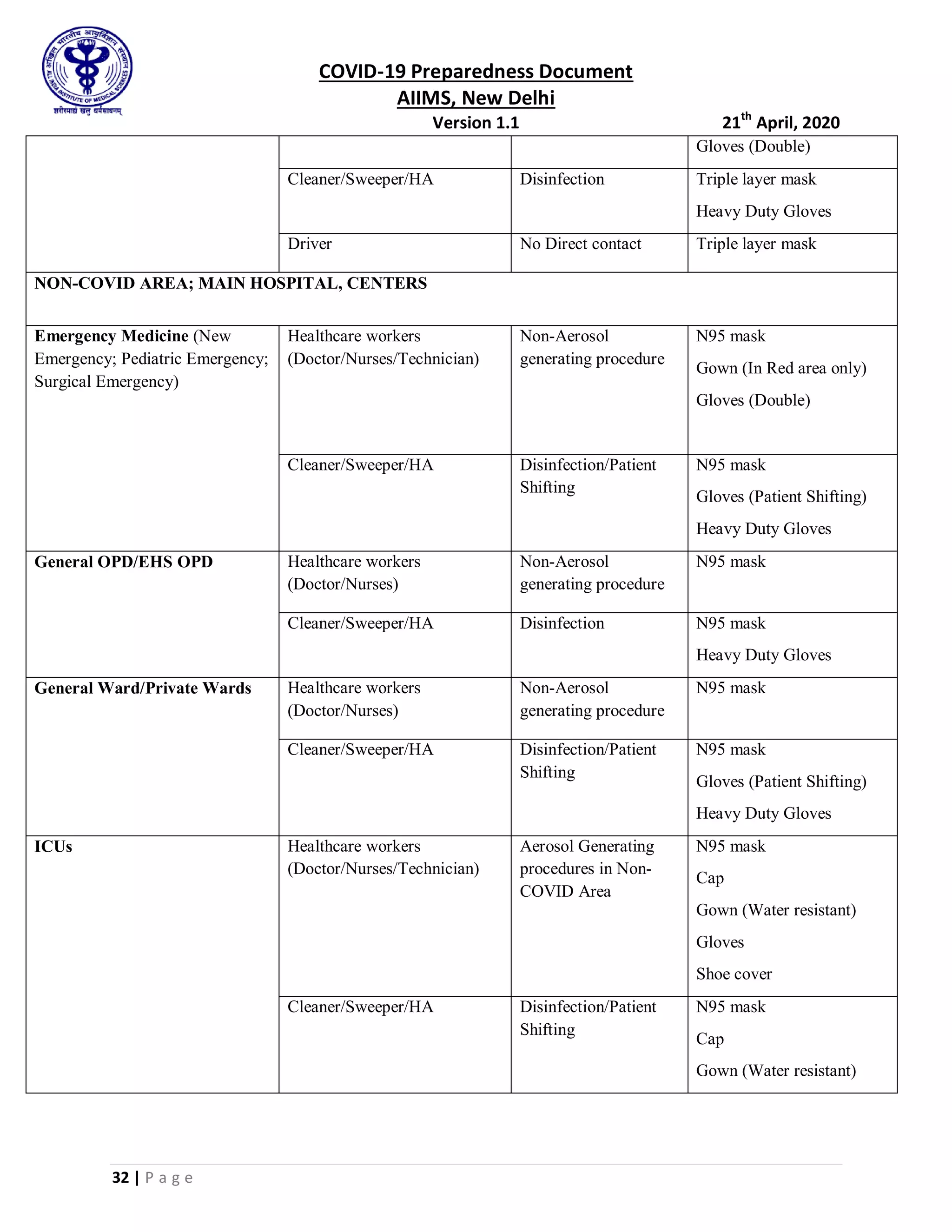This document provides a 3-sentence summary of the COVID-19 Preparedness Document from AIIMS, New Delhi:
The document outlines infection control and clinical management guidelines for COVID-19 at AIIMS, New Delhi. It includes definitions of suspected and confirmed cases, guidelines for sample collection and testing, recommendations for personal protective equipment and hand hygiene, as well as protocols for treatment and supportive care of patients. The document is intended for internal use at AIIMS and may be modified as more data on COVID-19 becomes available.


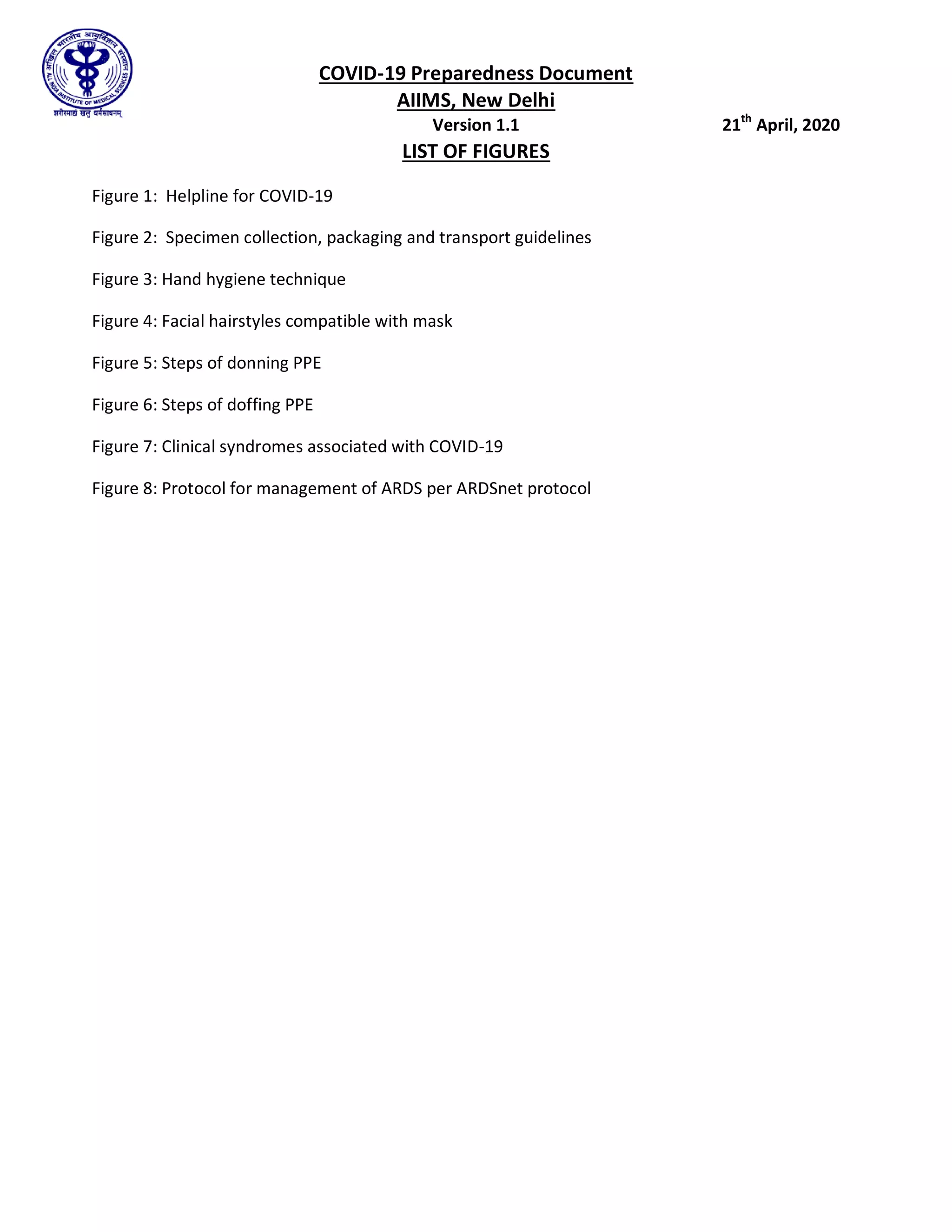




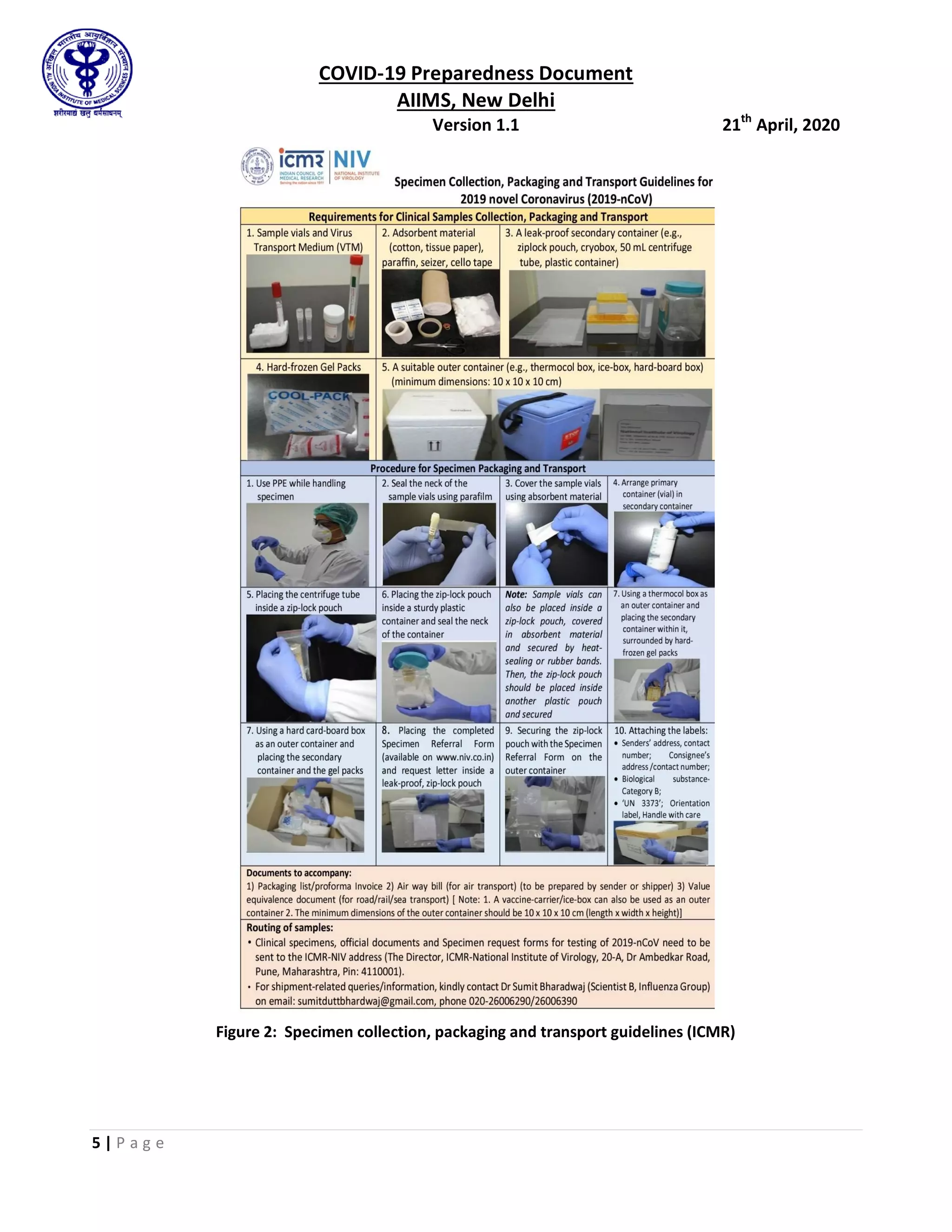


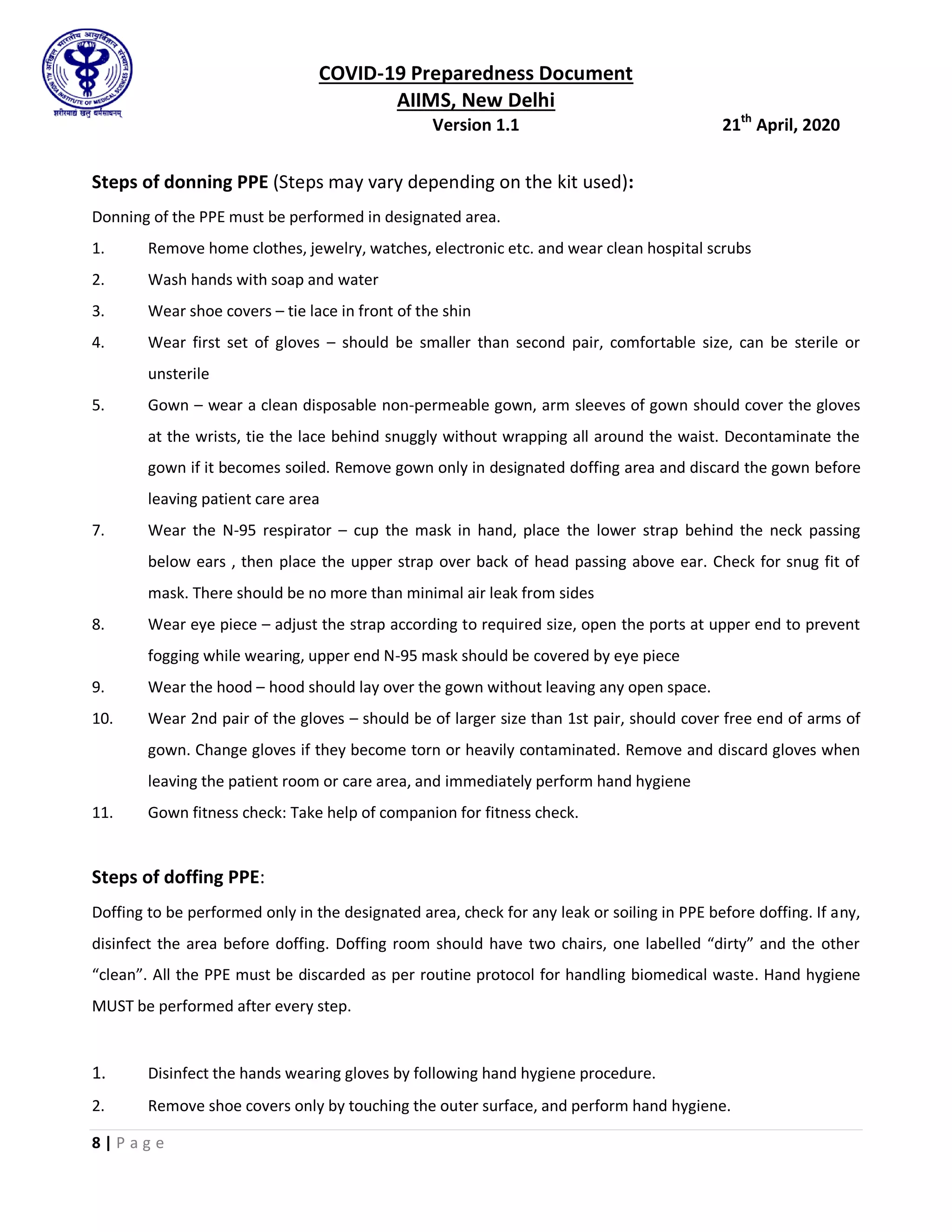




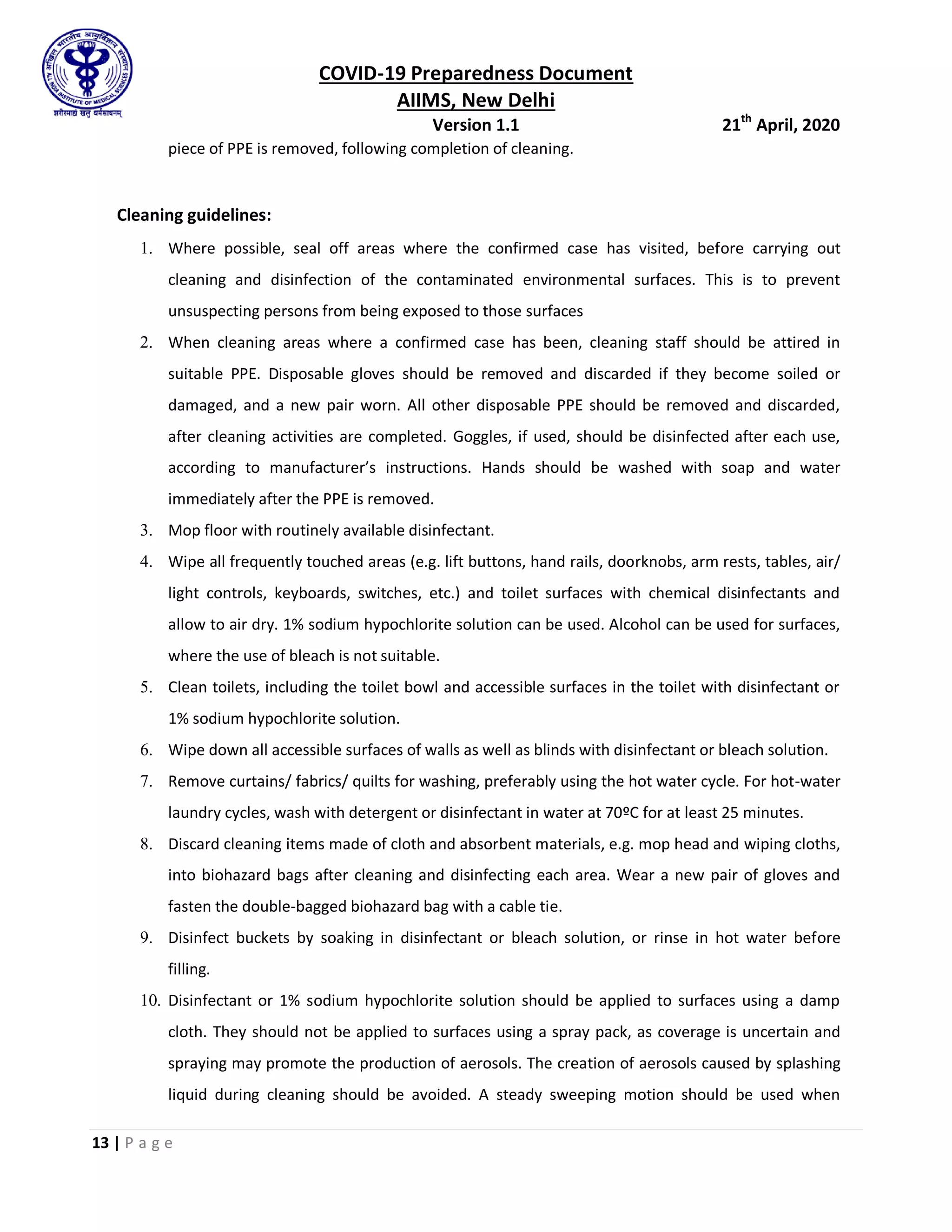

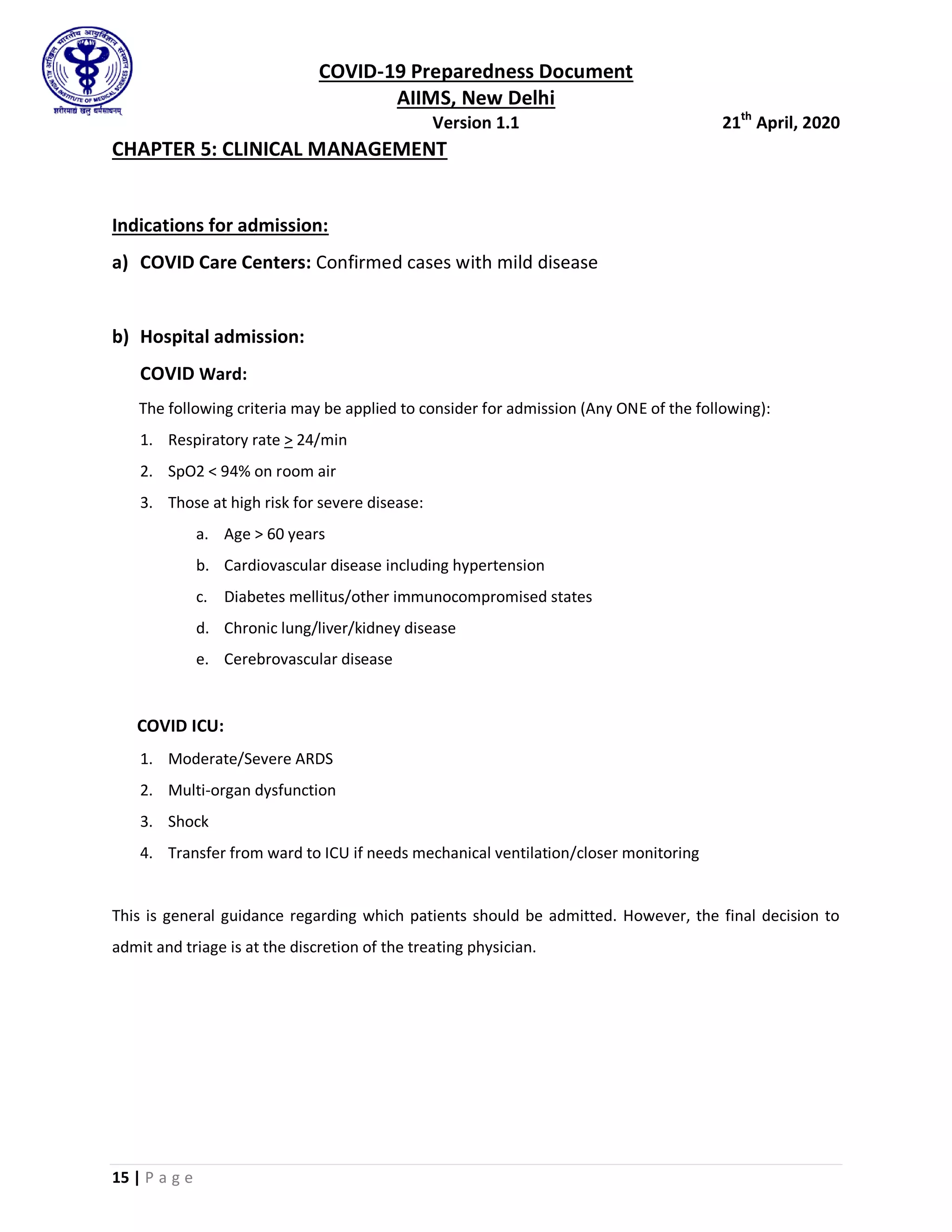
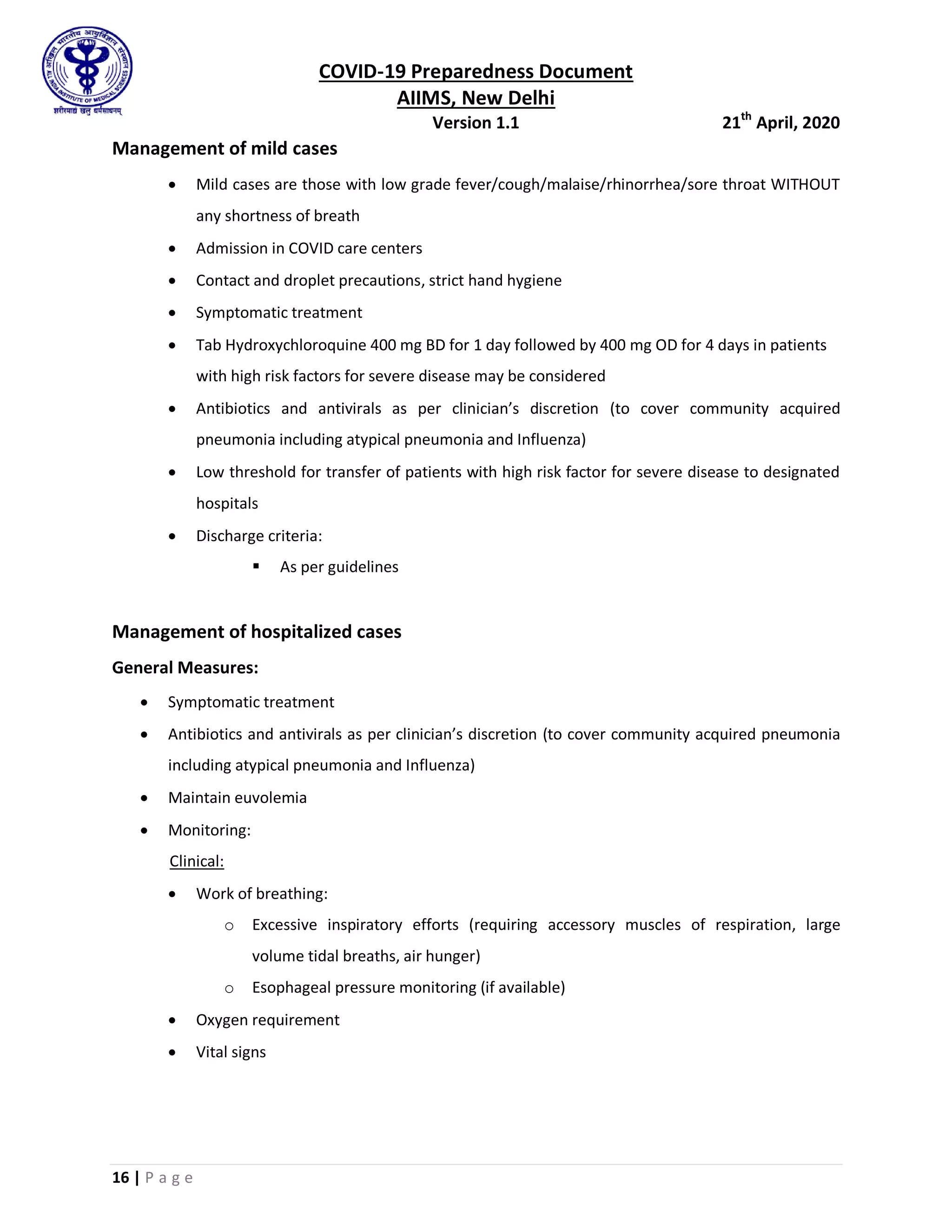
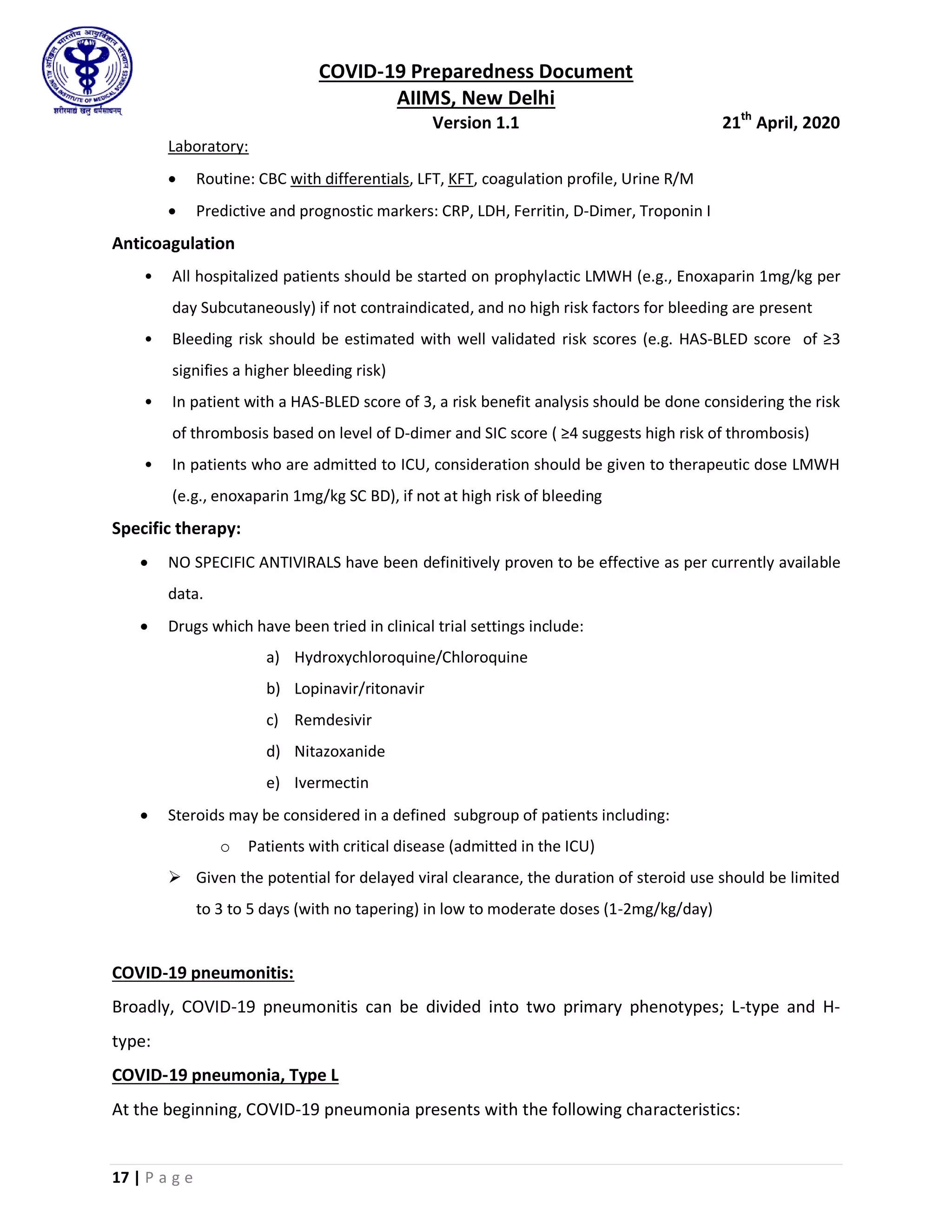

![COVID-19 Preparedness Document
AIIMS, New Delhi
Version 1.1 21th
April, 2020
19 | P a g e
• Assessment of severity of hypoxemia/shunt: If patient achieves a SpO2 >95% at
15L/min O2 the shunt fraction is mild. Failure to achieve this indicates a
moderate-severe shunt fraction.
• If the target is not achieved/maintained with the above mentioned devices,
cautious trials of CPAP via oro-nasal mask/NIV via helmet interface maybe given.
• Try to achieve targets with lowest possible PEEP.
• Use of CPAP/NIV requires intensive monitoring for any increase in work of
breathing/large tidal volume breaths [to prevent self-inflicted lung injury (SILI)]
and hemodynamic instability
• Note:
o NIV is associated with high failure rates, particularly in de-novo
respiratory failure.
o NIV without helmet interface is associated with greater risks of
aerosolisation leading to higher exposure of health care workers (see
table)
o Placing a Surgical mask over Nasal Cannula (NC) may help in reducing
dispersion
Table showing maximum exhaled air dispersion via different oxygen
administration and ventilatory support strategies: (in a negative pressure
room, with human simulator at an inclination of 45’)
Method Maximum exhaled air dispersion
distance (in cm)
Oxygen via NC (5L/min) 100
Oxygen via simple face-mask (4L/min) 40
Oxygen via Venturi mask (FiO2 40%) 33
Oxygen via non rebreathing mask 12 L/min <10
CPAP via oro-nasal mask (20cm of H2O) Negligible
HFNC (60L/min) 17 (62cm sideways leakage if not](https://image.slidesharecdn.com/aiimsfinal-220306072901/75/Aiims-final-22-2048.jpg)




![COVID-19 Preparedness Document
AIIMS, New Delhi
Version 1.1 21th
April, 2020
24 | P a g e
Ulcer prophylaxis with proton pump inhibitors
LMWH for thromboprophylaxis (as mentioned above)
Foley’s catheter and Ryle’s tube placement
Central venous catheter (CVC) insertion
Pressure ulcer prevention by position change every 2 hourly
Septic shock:
Recognize septic shock in adults when infection is suspected or confirmed AND vasopressors
are needed to maintain mean arterial pressure ≥ 65 mmHg AND lactate is ≥ 2 mmol/L in
absence of hypovolemia.
Recognize septic shock in children with any hypotension (systolic blood pressure [SBP] < 5th
centile or > 2 SD below normal for age) or two or more of the following: altered mental
state; bradycardia or tachycardia (Heart rate < 90/min or > 160/min in infants and < 70/min
or > 150/min in children); prolonged capillary refill (> 2 sec) or feeble pulses; tachypnea;
mottled or cold skin or petechial or purpuric rash; increased lactate; oliguria; hyperthermia
or hypothermia.
Management should be as per surviving sepsis campaign guidelines
Choice of antibiotics: as per indication (community acquired vs hospital acquired) and local
antibiogram
When to do dialysis:
Urine output < 400 ml/24 hours
Uremic encephalopathy
Severe metabolic acidosis
Uremic pericarditis
Refractory hyperkalemia
Fluid overload
Keep low threshold for dialysis as fluid overload and acidosis are detrimental in ARDS.
Bedside dialysis to be preferred.](https://image.slidesharecdn.com/aiimsfinal-220306072901/75/Aiims-final-27-2048.jpg)
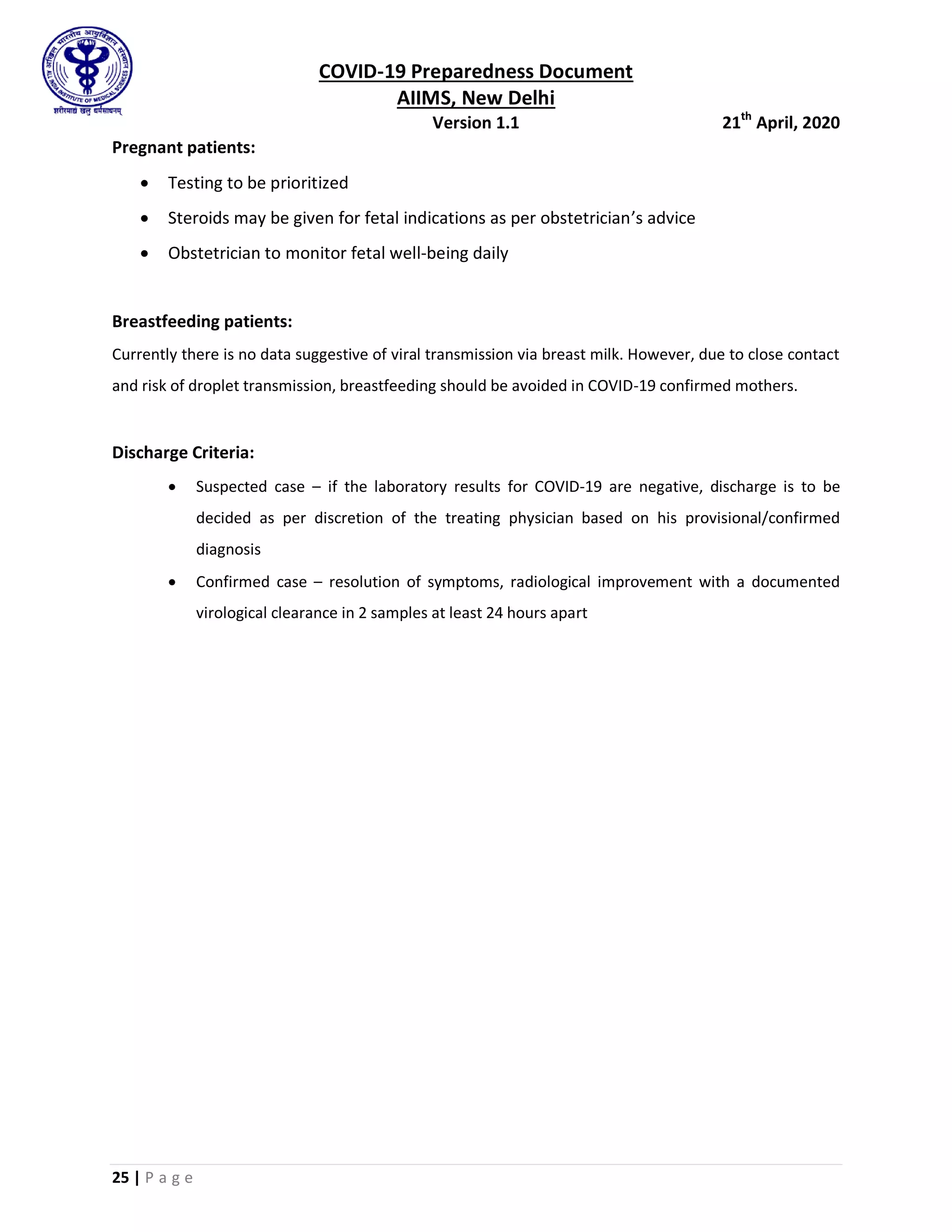





![COVID-19 Preparedness Document
AIIMS, New Delhi
Version 1.1 21th
April, 2020
31 | P a g e
Healthcare workers
(Doctor/Nurses)
Sampling N95
Goggles
Gown (Water resistant)
Gloves (Double)
Shoe cover
Hood
Cleaner/Sweeper/HA Disinfection/Patient
Shifting
Triple layer mask
Gloves (Patient shifting)
Heavy Duty Gloves
DESIGNATED SCREENING AREAS
Screening (New RAK OPD) Healthcare workers
(Doctor/Nurses)
Screening N95
Gown
Goggles
Gloves (Double)
Cleaner/Sweeper/HA Disinfection Triple layer mask
Heavy Duty Gloves
Boots
Screening (Emergency Medicine;
Pediatrics OPD)
Healthcare workers
(Doctor/Nurses)
Screening N95
Goggles
Gown [Surgical Linen (OT
Gown)] use with an apron
Gloves (Double)
Cleaner/Sweeper/HA Disinfection N95 mask
Gown
Goggles
Heavy Duty Gloves
TRANSPORT of COVID SUSPECT/ CONFIRMED CASE IN AMBULANCE
Ambulance (HCW travelling in
patient compartment)
Healthcare workers
(Doctor/Nurses)
Attending patient
(Direct contact >15
min)
N95
Goggles
Gown (Water resistant)](https://image.slidesharecdn.com/aiimsfinal-220306072901/75/Aiims-final-34-2048.jpg)
